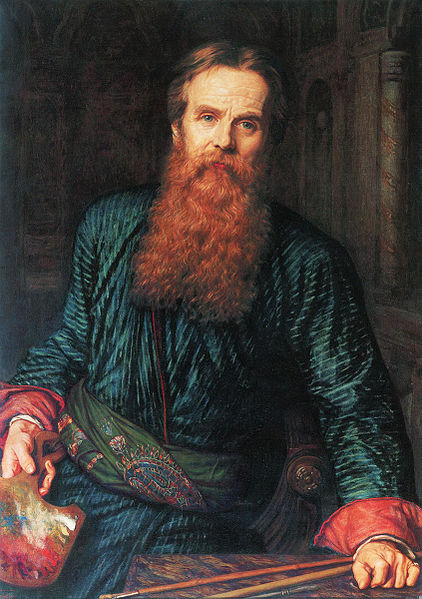The Light of the World (painting)
The Light of the World (1851–1854) is an allegorical painting by the English Pre-Raphaelite artist William Holman Hunt (1827–1910) representing the figure of Jesus preparing to knock on an overgrown and long-unopened door, illustrating Revelation 3:20: "Behold, I stand at the door and knock; if any man hear My voice, and open the door, I will come in to him, and will sup with him, and he with Me". According to Hunt: "I painted the picture with what I thought, unworthy though I was, to be divine command, and not simply a good subject." The door in the painting has no handle, and can therefore be opened only from the inside, representing "the obstinately shut mind". The painting was considered by many to be the most important and culturally influential rendering of Christ of its time.
The Light of the World (Keble College version)
The Light of the World (Manchester version)
The Light of the World (St Paul's Cathedral version)
William Holman Hunt was an English painter and one of the founders of the Pre-Raphaelite Brotherhood. His paintings were notable for their great attention to detail, vivid colour, and elaborate symbolism. These features were influenced by the writings of John Ruskin and Thomas Carlyle, according to whom the world itself should be read as a system of visual signs. For Hunt it was the duty of the artist to reveal the correspondence between sign and fact. Of all the members of the Pre-Raphaelite Brotherhood, Hunt remained most true to their ideals throughout his career. He was always keen to maximise the popular appeal and public visibility of his works.
Self-portrait, 1867, Galleria degli Uffizi, Florence
William Holman Hunt
Our English Coasts, 1852 ('Strayed Sheep')
Hunt in his eastern dress, photo by Julia Margaret Cameron







